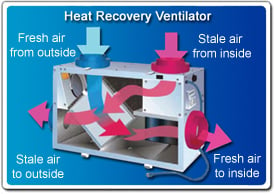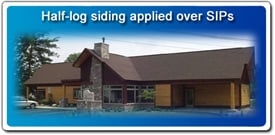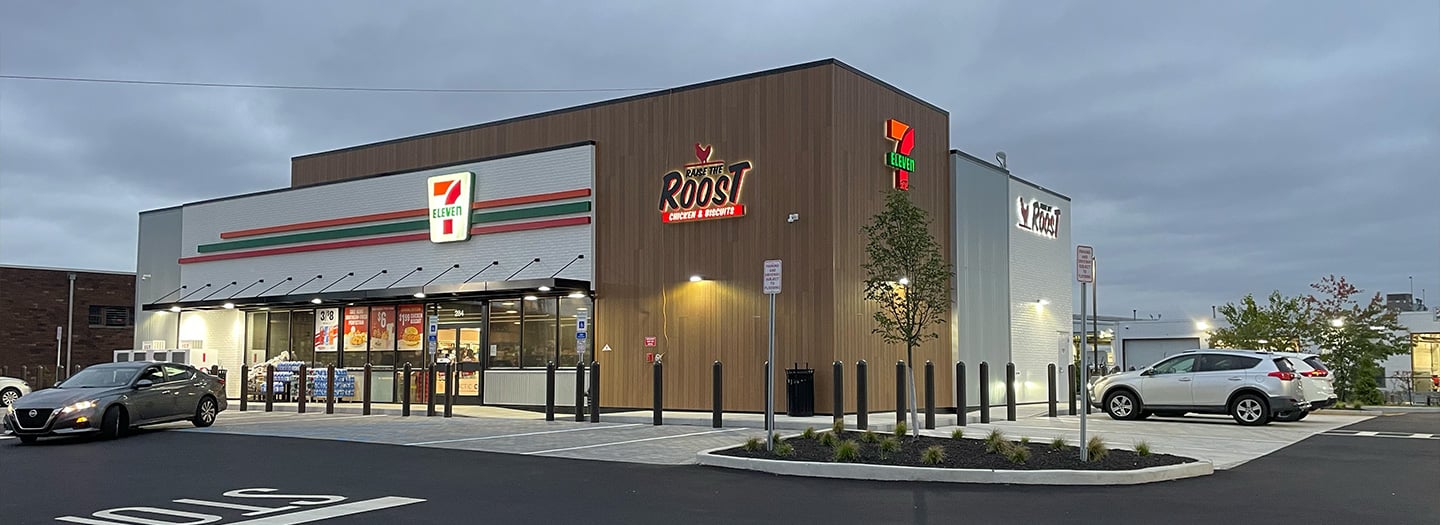Jump to section
Jump to section
Fasteners
PorterSIP fasteners are specifically engineered for attaching structural insulated panels (SIPs) and nail base panels to wood and metal framing. Featuring a large, pancake head style with 6-lobe drive, our SIP fasteners drive quickly and smoothly, and draw panels securely together. We offer three fastener styles for use in wood, corrugated steel and steel members without pre-drilling.
Product Features:
- Case hardened and tempered for easy installation and long term strength
- Large diameter, low profile pancake head provides excellent pull-through resistance
- 6-Lobe internal drive offers excellent bit engagement during installation, especially in high torque applications.
- Widest selection of fastener lengths in the industry for proper sizing to panel thickness.
- Choice of 3 thread/point styles for job-matched performance in either wood or steel substrates.
- E-Coat: epoxy finish for corrosion resistance

Product Specifications:
|
Material: |
Case hardened and tempered carbon steel |
|
Head Style/Drive: |
Pancake Head with T-30 Internal Drive |
|
Head Diameter: |
0.625″ |
|
Nominal Shank Diameter: |
SIPTP and SIPLD: 0.190″ SIPHD: 0.212″ |
|
Thread Length: |
SIPTP* and SIPLD: 2.750″ SIPHD: 3.875″ *3″ and longer fasteners; 2″ and 2-1/2″ fasteners are full thread |
|
Overall Lengths: |
SIPTP: 2″ thru 18″ SIPLD: 3″ thru 18″ SIPHD: 6″ thru 13-3/4″ |
|
Point: |
SIPTP: Gimlet Thread SIPLD: #2 (0.135″ dia.) Drill Point SIPHD: #4 (.0225″ dia.) Drill Point |
|
Coating: |
Epoxy e-coat (black) Passes more than 15 cycles (Kestemich) in accordance with DIN 50012 |

Performance Data
|
Head Pull-Thru Values |
||||
|
Fasteners |
Tensile Strength |
Shear Strength |
7/16″ OSB |
SIP |
|
SIPTP |
3380 lbf. |
2900 lbf. |
545 lbf. |
630 lbf. |
|
SIPLD |
3380 lbf. |
2900 lbf. |
545 lbf. |
630 lbf. |
|
SIPHD |
6000 lbf. |
3400 lbf. |
545 lbf. |
630 lbf. |
Withdrawal Values in Wood*
|
Specific Gravity |
0.67 |
0.55 |
0.50 |
0.46 |
0.43 |
0.36 |
0.31 |
|
SIPTP & SIPLD: |
1429 |
1173 |
1067 |
981 |
917 |
768 |
661 |
|
*Values are in lb/in. of thread penetration |
|||||||
Withdrawal Values in Steel
|
Type B Corrugated |
22 ga |
20 ga |
18ga |
||
|
SIPLD: |
510 lbf |
645 lbf |
920 lbf |
||
|
Structural Steel |
16 ga |
13 ga |
12 ga |
3/16″ ga |
1/4″ ga |
|
SIPHD: |
770 lbf |
1130 lbf |
1690 lbf |
3100 lbf |
4500 lbf |
Lateral Load Resistance
|
Fastener |
Main Member |
Side Member |
Load (lbf) |
|
SIPTP |
SPF 2×4 |
SIP |
943 |
|
SIPLD |
22 ga Corrugated Steel |
Nail Base |
411 |
|
SIPLD |
7/16″ OSB |
Nail Base |
112 |
|
SIPHD |
770 lbf |
SIP |
929 |
|
Length (Inches)> |
Length (mm) |
SIPTP Part # |
SIPLD Part # |
Pkg. Qty. |
|
2 |
(51) |
SIPTP-2000 |
NA |
500/Pail |
|
2-1/2 |
(64) |
SIPTP-2500 |
NA |
500/Pail |
|
3 |
(76) |
SIPTP-3000 |
SIPLD-3000 |
500/Pail |
|
3-1/2 |
(89) |
SIPTP-3500 |
SIPLD-3500 |
500/Pail |
|
4 |
(102) |
SIPTP-4000 |
SIPLD-4000 |
500/Pail |
|
4-1/2 |
(114) |
SIPTP-4500 |
SIPLD-4500 |
500/Pail |
|
5 |
(127) |
SIPTP-5000 |
SIPLD-5000 |
500/Pail |
|
5-1/2 |
(140) |
SIPTP-5500 |
SIPLD-5500 |
500/Pail |
|
6 |
(152) |
SIPTP-6000 |
SIPLD-6000 |
500/Pail |
|
6-1/2 |
(165) |
SIPTP-6500 |
SIPLD-6500 |
500/Pail |
|
7 |
(178) |
SIPTP-7000 |
SIPLD-7000 |
500/Pail |
|
7-1/2 |
(191) |
SIPTP-7500 |
SIPLD-7500 |
500/Pail |
|
8 |
(203) |
SIPTP-8000 |
SIPLD-8000 |
500/Pail |
|
8-1/2 |
(216) |
NA |
SIPLD-8500 |
250/Pail |
|
9 |
(229) |
SIPTP-9000 |
SIPLD-9000 |
250/Pail |
|
10 |
(254) |
SIPTP-10000 |
SIPLD-10000 |
250/Pail |
|
11 |
(279) |
SIPTP-11000 |
SIPLD-11000 |
250/Pail |
|
12 |
(305) |
SIPTP-12000 |
SIPLD-12000 |
250/Pail |
|
13 |
(330) |
SIPTP-13000 |
SIPLD-13000 |
250/Pail |
|
14 |
(356) |
SIPTP-14000 |
SIPLD-14000 |
250/Pail |
|
15 |
(381) |
SIPTP-15000 |
SIPLD-15000 |
250/Pail |
|
16 |
(406) |
SIPTP-16000 |
SIPLD-16000 |
250/Pail |
|
18 |
(483) |
SIPTP-18000 |
SIPLD-18000 |
250/Pail |
|
Note: Two T-30 Driver Bits included in each package. |
||||
|
Length (Inches) |
Length (mm) |
SIPHD Part # |
Pkg. Qty. |
|
6 |
(152) |
SIPHD-6000 |
500/Pail |
|
8 |
(203) |
SIDHD-8000 |
250/Pail |
|
9-3/4 |
(248) |
SIDHD-9750 |
250/Pail |
|
11-3/4 |
(298) |
SIDHD-11750 |
250/Pail |
|
13-3/4 |
(349) |
SIDHD-13750 |
250/Box |
|
Note: Two T-30 Driver Bits included in each package. |
|||
Fire Resistance
15 Minute Thermal Barrier
The International Building Codes (IBC) and International Residential Code (IRC) specify that SIPs shall only be used on buildings of combustible construction. (Type V)
The IBC and IRC building codes further state that any foam plastic insulation shall be separated from the interior of the building by an approved 15 minute thermal barrier consisting of ½” of gypsum wall board or an equivalent thermal barrier. Since the core of a SIP is a foam plastic, the inside of a wall or roof panel will need to be covered by a 15 minute thermal barrier.
The APA has reported that 23/32” western species plywood or OSB will meet the 15 minute thermal barrier. This report additionally states that, according to IBC, 15/32” plywood or OSB prescriptively meet this thermal barrier requirement for roof assemblies.
Beside gypsum wall board, plywood and OSB, other materials such as T&G decking may meet the 15 minute thermal barrier requirement. However, before proceeding, consult your local building code or inspector. While decisions made within one code jurisdiction may be considered as a precedent for others, the final decision on materials not specifically listed in the code, are usually made on a case-by-case basis within each jurisdiction.
See Section 2603 of the IBC “Foam Plastic Insulation” for more detailed information.
R-values and Air Leakage
SIP buildings have been proven to reduce energy costs by up to 50%, or more, when compared to conventional structures.
PorterSIP R-values:
|
Panel Thickness |
At 40 degrees F |
At 75 degrees F |
|
4-1/2″ |
16.7 |
15.5 |
|
6-1/2″ |
25.1 |
23.2 |
|
8-1/4″ |
32.4 |
29.9 |
|
10-1/4″ |
40.7 |
37.7 |
|
12-1/4″ |
49.1 |
45.4 |
The figures above are tested R-values of the individual components. The number used for the R-value of the 7/16” OSB is .55. This data is from the APA. The R-value data for the EPS core is provide by Porter Corp’s EPS suppliers. This data was developed by testing in accordance to ASTM C578. The figures above are based on the R-value per inch of thickness and are then multiplied by the thickness of the core of each panel’s size.
PorterSIP Whole Wall R-values
The whole wall R-values is a measure of thermal resistance used by Oak Ridge National labs to determine real-world R-value of wall assemblies. Under uniform conditions, the R-value is the ratio of the temperature difference across an insulator (a wall or roof) and the heat flux (heat flow per unit area) through it. The bigger the number, the better the building insulation’s effectiveness.
In real-world conditions, stick built walls typically have studs 16” O.C. Each of these studs is a through thermal conductor. When SIP walls and stick built walls are compared in the real world condition of the whole wall R-value test, SIPs are proven to be much better performers. See the chart below. Click here for the Whole Wall R-value study.
Whole Wall R-value Comparisons with ORNL

PorterSIPs Air Leakage
The superior performance of SIPs comes from their inherent air-tightness as well as their good R-values and the lack of thermal conducting studs. Oak Ridge National Labs also ran a test comparing SIP wall assembly air-tightness to stick-built wall assembly air-tightness. ORNL found the SIPs had 93% less air-leakage a comparable stick built wall assembly. See the chart below. Click here for the ORNL air infiltration report.

Considerations
Moisture Management
Since SIPs are a type of wood based construction, like any wood based construction, the single greatest concern with SIPs is potential damage from water exposure. In this regard, SIPs should be treated similarly to wood frame construction where OSB is used as an exterior sheathing. Like any wood product when exposed to moisture, OSB is susceptible to mold, rot and mildew. The moisture can come from inside the structure as humidity or outside the structure as rain, mist or condensation. To eliminate these problems, the OSB must be kept dry and/or allowed to dry when it gets wet.
Outside: To keep the outside of the SIPs dry a few strategies must be employed. A drain plain, such as 30# building felt should be installed behind any siding or roofing. All penetrations must be properly flashed and sealed. Any time wood, or fiber-cement siding is used over the OSB, it must be back and end-primed. In addition to these precautions, some climates may require use of a vent space between the siding roofing and the exterior OSB skin of the SIP.
Inside: Controlling moisture from the inside of the structure is just as important. To keep the OSB dry, the following strategies must be employed. During construction, care must be taken to thoroughly seal all panel joints. This is done with expanding-foam sealant, mastic type construction sealant, and vapor barrier tape designed to adhere to OSB. Exhaust fans must be used in any higher humidity area such as kitchens and bathrooms.

Also, using an Energy Recovery Ventilator or Heat Recovery Ventilator is recommended. These units expel moist and stale air and bring in fresh air and in cool climates they keep interior humidity from becoming higher than outdoor humidity.
Foundation Juncture
SIPs are never to be installed in direct contact with concrete; they should always be separated from concrete by a capillary break-like poly seal and a pressure treated lumber sill plate that extends to the outside face of the SIP. (See detail F-1 and F-3.)
Pest Management
Any building type is susceptible to pest infestation and SIP construction is no different. Some suggestions are:
- Have a pest control specialist treat the site before construction
- Do not bury scrap wood during backfilling; seal or screen any possible entry points
- Store any firewood away from the building
- Keep food in well sealed containers, fix any moisture problems
- Keep trees trimmed so they don’t hang over or touch the building
- Do not plant shrubberies within 3’ of the exterior of the building
- Keep exhaust and HVAC system filters clean and keep floors free of food particles
Adjacent exterior decks
One very common area to find rot in any wood frame building is where an exterior deck meets the wall of a structure. These areas are penetrated with fasteners, are difficult to seal, and are subject to water falling from the roof and then splashing up off the deck onto the walls of the building. The best solution for this problem is to build the deck to be free-standing and not attached to the building at all. Also, keep a 1”-wide space between the building and the deck to allow for drying and drainage. Keeping the deck surface one step lower than the surface of the interior of the building is also a good idea. This keeps snow or water from migrating under a door, and reduces other possible water entry problems.

Timber frame and log construction
Timber frame and log buildings tend to expand and contract with moisture, sometimes in dramatic amounts. Some of the details shown on this website may need to be modified when SIPs are installed over log walls, or over a timber frame. There are books about timber frame construction that show good details dealing with this issue. See www.tfguild.org; this website is a good resource for timber framers.
Building Science Corporation –
www.buildingscience.com
The Engineered Wood Association –
www.apawood.com
Environmental Protection Agency –
www.epa.gov
US Green Building Council –
www.usgbc.org
Building Green –
www.buildinggreen.com
